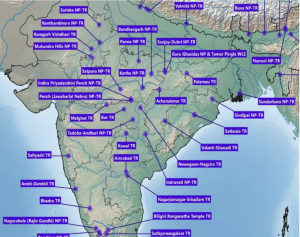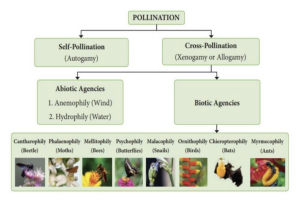1. Arrange the following Tiger reserves from west to east direction:
- Buxa tiger reserve
- Palamau tiger reserve
- Bandipur tiger reserve
- Kawal tiger reserve
Select the correct answer using the codes given below:
- 3 – 4 – 2 -1
- 3 – 4 – 1 -2
- 4 – 3 – 2 -1
- 4 – 3– 1 -2
2. Off-grid Renewable Energy can play important role to provide energy to isolated communities and areas.
Which of the following can be used as a part of such system?
- Biomass gasifiers
- Micro hydro projects
- Solar Photo Voltaic Roof-top Systems
Select the correct answer using the code below:
- 1 and 2 only
- 2 and 3 only
- 1 and 3 only
- All of the above.
3. Consider the following statements
- Bi-Fuel means the engine could run on either fuel separately.
- Dual fuel vehicle means the engine uses two fuels at the same time.
- FFV is capable of running on either petrol or ethanol or a combination of both.
Which of the above statements is/are correct?
- 1 and 2 only
- 2 and 3 only
- 1 and 3 only
- 1, 2 and 3
4. With reference to the Genetically Modified mustard (GM mustard) developed in India, consider the following statements :
- GM mustard has the genes of a soil bacterium that give the plant the property of pest-resistance to a wide variety of pests.
- GM mustard has the genes that allow the plant cross-pollination and hybridization.
- GM mustard has been developed jointly by the IARI and Punjab Agricultural University.
Which of the statements given above is/are correct?
- 1 and 3 only
- 2 only
- 2 and 3 only
- 1, 2 and 3
5. Consider the following kinds of organisms:
- Bat
- Bee
- Bird
Which of the above is/are pollinating agent/agents?
- 1 and 2 only
- 2 only
- 1 and 3 only
- 1, 2 and 3
Answers with Explanations
1. Arrange the following Tiger reserves from west to east direction:
- Buxa tiger reserve
- Palamau tiger reserve
- Bandipur tiger reserve
- Kawal tiger reserve
Select the correct answer using the codes given below:
- 3 – 4 – 2 -1
- 3 – 4 – 1 -2
- 4 – 3 – 2 -1
- 4 – 3– 1 -2
Answer: 1
Explanation

2. Off-grid Renewable Energy can play important role to provide energy to isolated communities and areas.
Which of the following can be used as a part of such system?
- Biomass gasifiers
- Micro hydro projects
- Solar Photo Voltaic Roof-top Systems
Select the correct answer using the code below:
- 1 and 2 only
- 2 and 3 only
- 1 and 3 only
- All of the above.
Answer: 4
Explanation
- Distributed/decentralized renewable power projects help to meet the energy requirements of isolated communities and areas which are not likely to be electrified in near future.
- Off-grid Renewable Energy/Power can be generated using the following:
- Biomass based heat and power projects and industrial waste to-energy projects for meeting captive needs
- Biomass gasifiers for rural and industrial energy applications
- Watermills/micro hydro projects – for meeting electricity requirement of remote villages
- Small Wind Energy & Hybrid Systems – for mechanical and electrical applications, mainly where grid electricity is not available.
- Solar PV Roof-top Systems for abatement of diesel for power generation in urban areas.
3. Consider the following statements
- Bi-Fuel means the engine could run on either fuel separately.
- Dual fuel vehicle means the engine uses two fuels at the same time.
- FFV is capable of running on either petrol or ethanol or a combination of both.
Which of the above statements is/are correct?
- 1 and 2 only
- 2 and 3 only
- 1 and 3 only
- 1, 2 and 3
Answer: 4
Explanation
- A bi-fuel system uses two types of fuel, but the fuels are not mixed together during operation.
- The engine is capable of switching between the two so that it is always using the type of fuel most efficient for the conditions at hand.
- A dual-fuel system is capable of using two types of fuel at the same time in a mixture.
- It usually cranks up on one type of fuel, and the system gradually adds the secondary fuel source until the optimal mixture of the two fuels is achieved for efficient running.
- Flex fuel vehicles (FFV) are capable of running on 100% petrol or 100% bio-ethanol or a combination of both.
- Despite containing less energy than petrol, the calorific value (energy contained in the fuel) of bio-ethanol can be as par with petrol with the help of advanced technology.
- Flex fuel vehicles are affordable in the long term as it has low manufacturing cost but it has less mileage though.
- Flex Fuel Strong Hybrid Electric Vehicles (FFSHEV) essentially houses an electric motor which powers the vehicle alongside the traditional petrol engine.
4. With reference to the Genetically Modified mustard (GM mustard) developed in India, consider the following statements :
- GM mustard has the genes of a soil bacterium that give the plant the property of pest-resistance to a wide variety of pests.
- GM mustard has the genes that allow the plant cross-pollination and hybridization.
- GM mustard has been developed jointly by the IARI and Punjab Agricultural University.
Which of the statements given above is/are correct?
- 1 and 3 only
- 2 only
- 2 and 3 only
- 1, 2 and 3
Answer: 2
Explanation
- DMH-11 is a transgenic hybrid mustard.
- Hybridisation involves crossing two genetically dissimilar plant varieties that can even be from the same species. The first-generation (F1) offspring from such crosses tend to have higher yields than what either parent can individually give.
Hybridisation in mustard is not easy as its flowers have both female (pistil) and male (stamen) reproductive organs, making the plants largely self-pollinating
- Since the eggs of one plant cannot be fertilized by the pollen grains from another, it limits the scope for developing hybrids.
- In DMH-11 hybridization has been achieved by genetic modification.
- Scientists at Delhi University’s Centre for Genetic Manipulation of Crop Plants (CGMCP) have developed the hybrid mustard DMH-11 containing two alien genes isolated from a soil bacterium called Bacillus amyloliquefaciens.
- The technology used for hybridization is called as barnase-barstar GM technology.
- DMH – 11 was created through transgenic technology, primarily involving the Bar, Barnase and Barstar gene system.
- The Barnase gene confers male sterility, while the Barstar gene restores DMH – 11’s ability to produce fertile seeds.
- The insertion of the third gene Bar, enables DMH – 11 to produce phosphinothricin-N- acetyl-transferase, the enzyme responsible for Glufosinate resistance.
- Increased Productivity
- Reduced import dependency. Currently, India has a deficit of edible oils by almost 55-60 per cent of the total consumption. In the financial year 2020-21, around 13.35 million tonnes of edible oils were imported at a total cost of around Rs 117,000 crores in foreign exchange.
- The decision to release GM mustard will encourage more research and innovations to reduce the environmental footprints of agriculture, develop climate resilient crops, and thereby assure food and nutritional security of the country.
- It will also accelerate breeding efforts to produce new high yielding disease and pest resistant hybrids using this new technology
The main Criticism Include
- Probability of toxicity of a herbicide tolerant food crop
- Presence of herbicide tolerant gene will make the GM mustard plants tolerant to the spraying of glufosinate ammonium, a weedicide. This will cause displacement of manual labour engaged in weeding by promoting use of chemical herbicides.
- Concern is also raised over GM mustard threatening or undermining the population of honey bees. Mustard flowers are a source of nectar for honey bees and many other pollinator insects.
5. Consider the following kinds of organisms:
- Bat
- Bee
- Bird
Which of the above is/are pollinating agent/agents?
- 1 and 2 only
- 2 only
- 1 and 3 only
- 1, 2 and 3
Answer: 4
Explanation
Pollination is the process of reproduction in plants.
It is the transfer of pollen from a male part of a plant to a female part of a plant.

➡️UPSC 2023 General Studies Course: https://sleepyclasses.com/general-studies-for-upsc/
➡️Sociology Optional for UPSC: https://sleepyclasses.com/sociology-for-upsc/
➡️Political Science and IR for UPSC: https://sleepyclasses.com/psir-for-upsc/
➡️Signup here – https://sleepyclasses.com/
Have any query related to UPSC preparation: 📞Contact Us ► Toll-Free: 1800 890 3043 ► Mobile: 6280133177 ► Email: Sleepy.Classes@gmail.com ► WhatsApp: 6280133177



